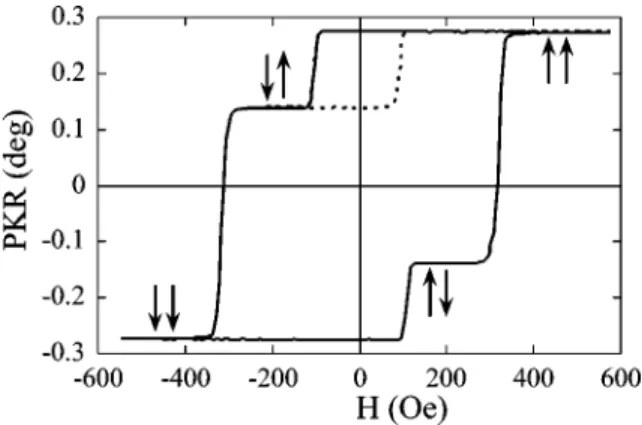Domain decoration in dipolar coupled ferromagnetic stacks with perpendicular anisotropy
Texte intégral
Figure



Documents relatifs
3b Diagram of the normalized switching field versus the normalized exchange coupling strength J 1 r in the case of a conventional ECC particle for the two-spin model and for various J
Whereas the images with two and three levels are explained as result of dipolar and lineal exchange interaction that keep the magnetization in each Ni block perpendicular to the
(Note: LBD calculated for a subgraph will still find the maximum degree node, hence the maximal degree nodes may appear in more than one subgraph.) Thus we have one
Nous avons évoqué à plusieurs reprises la possibilité d'observer deux états stationnaires stables pour un même jeu de contraintes. Le modèle d'EDELSTEIN présenté dans le chapitre
[3] Georges Bastin and Jean-Michel Coron, Stability and boundary stabilization of 1-D hyperbolic systems, Progress in Nonlinear Differential Equations and their Applications, vol..
First, the case study is concerned with urban policy mobilities in security and surveillance matters – namely, the transnational circulation and reproduction of best practices in
HAL is a multi-disciplinary open access archive for the deposit and dissemination of sci- entific research documents, whether they are pub- lished or not. The documents may come
Very large DW velocities (∼ 400m/s) were first observed in ultrathin layers of cobalt deposited on a platinum layer and covered by an oxide by Miron et al. There are many